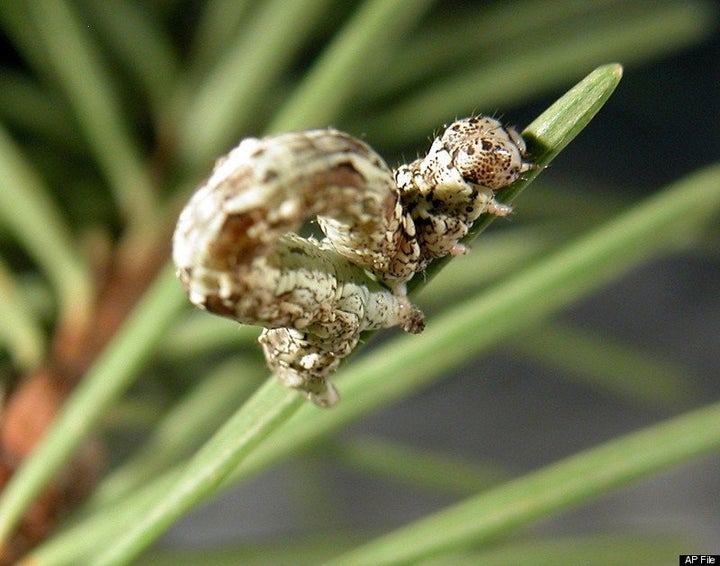
Caterpillars may be small insects, but they pack a lot of interesting capabilities in their tiny frames.
According to Live Science, scientists have just discovered that the walnut sphinx caterpillar has the ability to whistle through its sides. Though scientists have long been aware that some caterpillars make noises, they have only just started investigating how the noises are made and why they are made.
Unlike most animals, insects do not breathe through noses, but rather through small holes in their sides, known as spiracles. In order to determine how the whistling sounds are made, neuroethologist Jayne Yack and researcher Veronica Bura applied latex to the eight pairs of spiracles on the caterpillar. They then uncovered each pair separately, while simultaneously pinching the insect. They discovered that the whistles come from the eighth pair of spiracles.
Some caterpillars, such as the silk-moth caterpillar, make clicking sounds by snapping their mandibles together. This wards off predators by notifying them that the caterpillars do not taste good. Yack and Bura speculated that the walnut sphinx caterpillar might have the same motive, but not the same method. They experimented, setting the caterpillars up with caterpillar-eating birds in cages in order to gauge the caterpillars' reactions to their predators. When the birds came close, the caterpillars emitted the whistling sound, startling and frightening the birds. All of the caterpillars remained unscathed for this reason. Their study is documented in "The Journal of Experimental Biology."
Caterpillars have other self-preservation tactics as well. Some protect their territory by using their rear ends, or as scientists call them, their "anal oars," to make scraping sounds against leaves. This warns intruders that they are on taken land. Because the sounds they make are both repetitive and ritualized, scientists believe that these bugs have mastered a type of communication.
Alcon caterpillars mimic surface chemicals that are found on ant offspring. Parent ants will carry the baby caterpillars to the ant nest and treat them as their own. The baby caterpillars will eat some of the ants, get fed by the worker ants, and even manage to get priority treatment from the parent ants.
CLICK HERE to see footage of the whistling caterpillars, and CLICK HERE for a video of carnivorous caterpillars.